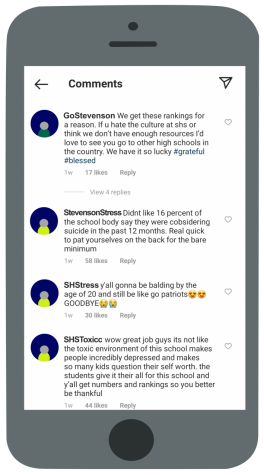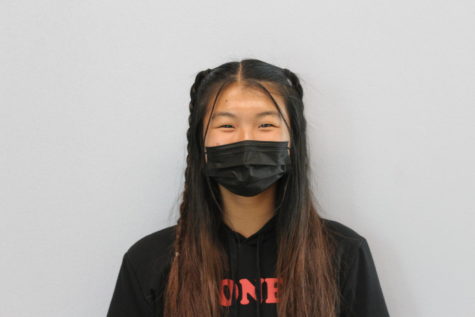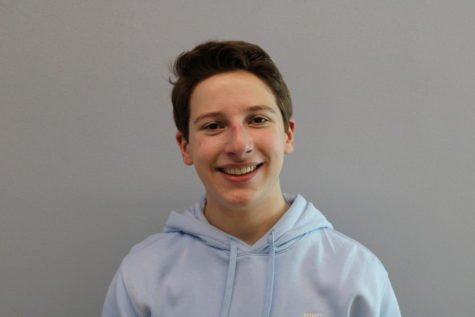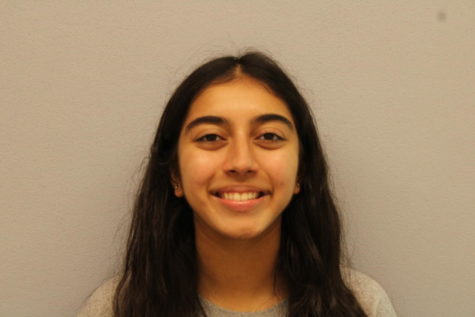Enduring Expectations
Students debate the benefits and detriments of Stevenson’s competitive environment
Hannah Yu ’23 has gone from competing at weekend ICDA tournaments to cheering her friends on from home, from writing for the Statesman to catching up on hours of homework in study hall and from attending competitive club meetings to pursuing casual interests.
From freshman year to sophomore year, Yu has dropped her favorite activities due to what she calls academic pressures and toxic environments.
Among most community members, Stevenson is well-known for its competitive extracurriculars, academic expectations and high ranking, making many students feel pressured to meet Stevenson’s standards. Some students believe that the opportunities and resources offered at Stevenson outweigh those of other schools, ultimately making the school a more supportive environment. However, after recent instances of self-harm, other students have voiced their concerns with what they call a toxic, highly competitive environment, as well as discontent for what they see as the school’s lack of care for students’ mental health.
“The Stevenson community wants us to continue taking AP classes and achieve high SAT scores,” Yu said. “For most students [there] is too much pressure, which causes a lot of mental health issues because students often feel like they are not doing enough or they feel like they are failing.”
For many, this pressure is propelled by communal expectations to attend prestigious colleges. Some students feel obligated to overwhelm themselves with accomplishments in efforts to draw collegiate attention.
“It is not normal for students to be taking four or more AP classes, but in order to stand out in college [admissions], this is what students at Stevenson feel they need to do,” Shreeya Sinha ’22 said.
However, administrators at Stevenson maintain that this commonly held belief—that racking up achievements for college applications will make a student stand out—is a myth. They believe that students should avoid burdening themselves with excessive extracurriculars and AP classes for the sake of college admissions.
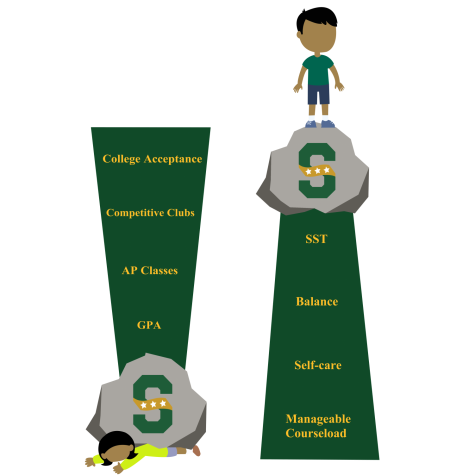
“There are some kids who think that the more things they do, the better it will look for colleges,” Principal Troy Gobble said. “I want to be clear, college admissions officers have told us over and over again that they are looking for students who find something that they’re truly passionate about and really explore that.”
Overburdening oneself for the purpose of college admissions isn’t the only form of toxicity that students have experienced in Stevenson. Even students who have followed Gobble’s advice by pursuing their passions have still gotten caught up in the high expectations of classes or the competitive nature of extracurriculars, the latter being perpetuated by fellow club members and leaders.
“When I first joined Stevenson clubs, I thought it was really cool that they were all student-led because I was hoping one day I would be in a leadership position as an upperclassman,” Yu said. “But as time went on, I realized it was super problematic because there was minimal teacher oversight. Students are competitive and that can create a toxic environment.”
The competitive clubs at Stevenson coupled with the pressure to attend an elite college has caused mental health issues in a number of students. Some students like Yu and Sinha believe the school could do more to help; however, other students, such as Julia Szafranski ’24, feel Stevenson is sometimes unfairly criticized.
“You’ve got the chance to go to one of the best schools in the state—it’s unfair to blame all your problems on the school,” Szafranski said. “I’ve had teachers take five minutes at the beginning of class every week and give us Google Forms to submit as ‘temperature checks.’. So, resources are available, [but] whether or not a student chooses to use them is really up to them.”
Despite such disagreements about the school’s environment, some critics of Stevenson’s culture have found common ground with Szafranski in that Stevenson’s pressures stem from other sources as well. They believe that the problem isn’t derived solely from the school; it also comes from the social climate.
“I think it’s the students themselves that put this pressure rather than the school or the faculty,” Sinha said. “Every student just wants to outperform others and that’s the reason why this school is toxic sometimes.”
Though this alleged cutthroat environment at Stevenson has encouraged some students to call for reform, others have come to expect this atmosphere due to the ever-competitive nature of the college admissions system that is prevalent in many American high schools. Szafranski agrees that the pressures students face are not unique to Stevenson.
“I feel like you can find academic pressures and social pressures in any high school, not only Stevenson,” Szafranski said.
Nevertheless, the commonality of these pressures does not deter Stevenson critics from continuing to pursue schoolwide reform. Yu says that Stevenson should further adapt its assistance in maintaining the mental health of its student body. She believes that the administration should conduct a more thorough examination of students’ true needs in order to improve the mental health program at Stevenson.
“The decisions you make throughout the day are more important than grabbing a cookie during lunch [as part of a self-care Friday],” Yu said. “Stevenson can include boundary setting, talking to yourself nicely, and, in general, life skills into the Health and Advisory curricula.”
Gobble is confident in the current Student Support Teams’ (SST) preventative actions, and he encourages students to reach out to their SSTs. Nonetheless, based on this recent student feedback, Gobble wants to get a better understanding of where SST support is insufficient.
“I know that the counselors come once a week to the Freshman Mentor Program Advisories to ensure that they know every student,” Gobble said. “Our expectation is that counselors will get back to kids within the day when students contact them, and that continues to be our expectation. If that’s not happening, they should contact me or the Director of Student Services because we’re here for them.”
Szafranski agrees with Gobble in that there are numerous resources available to help students maintain a healthy mindset. She maintains that the opportunities offered at Stevenson in regards to mental health outperform those of other schools. Her faith in and praise for Stevenson’s resources partially stem from the administration’s willingness to reform the system.
“I’ve moved around a lot and I’ve seen many schools, so I can definitely say that Stevenson is amazing when it comes to listening to their students,” Szafranski said.
Although Szafranski, Yu and Sinha all have differing opinions on the school’s and SST’s role in improving student mental health, all three ultimately agree that mental health should be one’s own priority. They suggest that students focus on their personal growth as a method to improve and maintain their mental health during their high school career.
“My only advice would be that you as an individual are the only person that can tell you what is right for you,” Yu said. “People can give their opinion and you can ask for advice, but at the end of the day, you have to make decisions on what will benefit you in the long run.”
